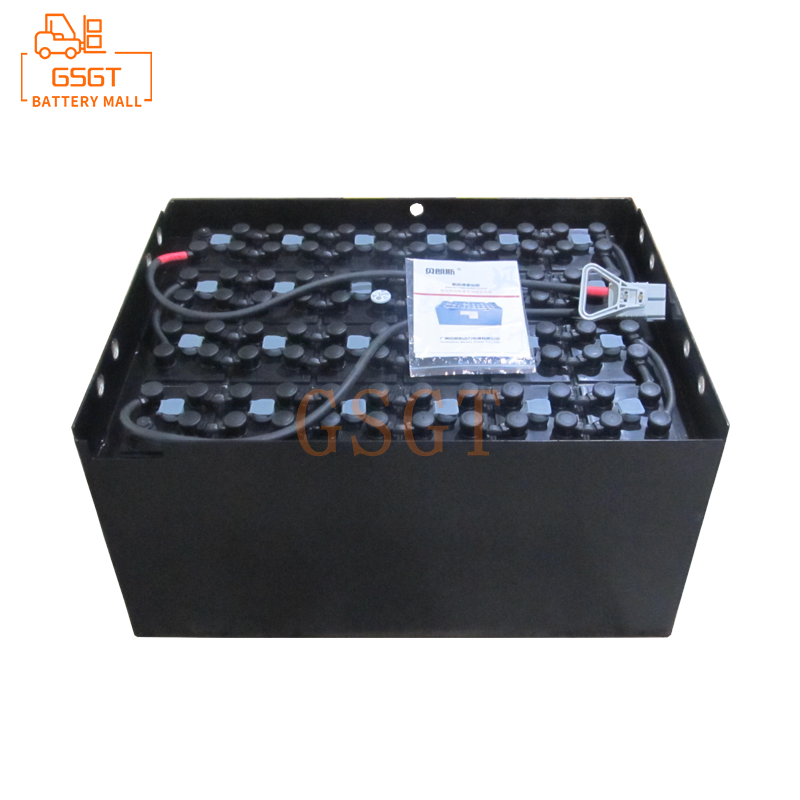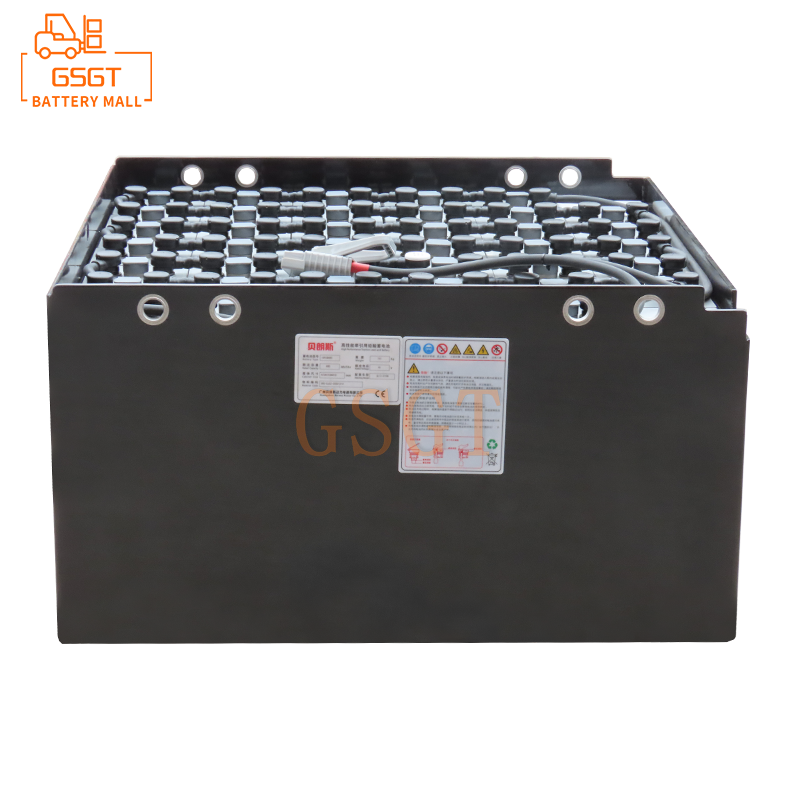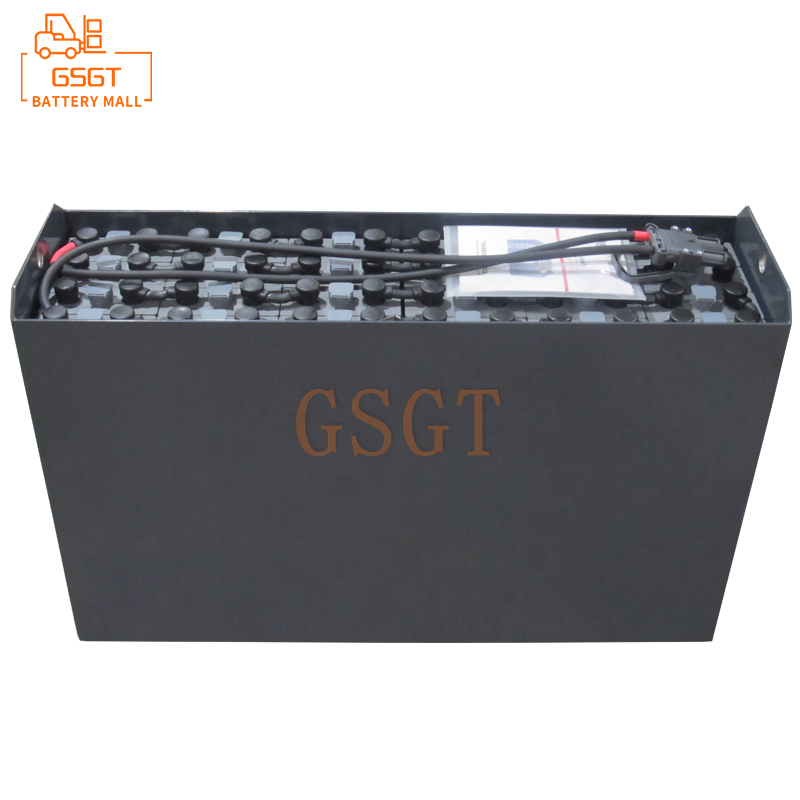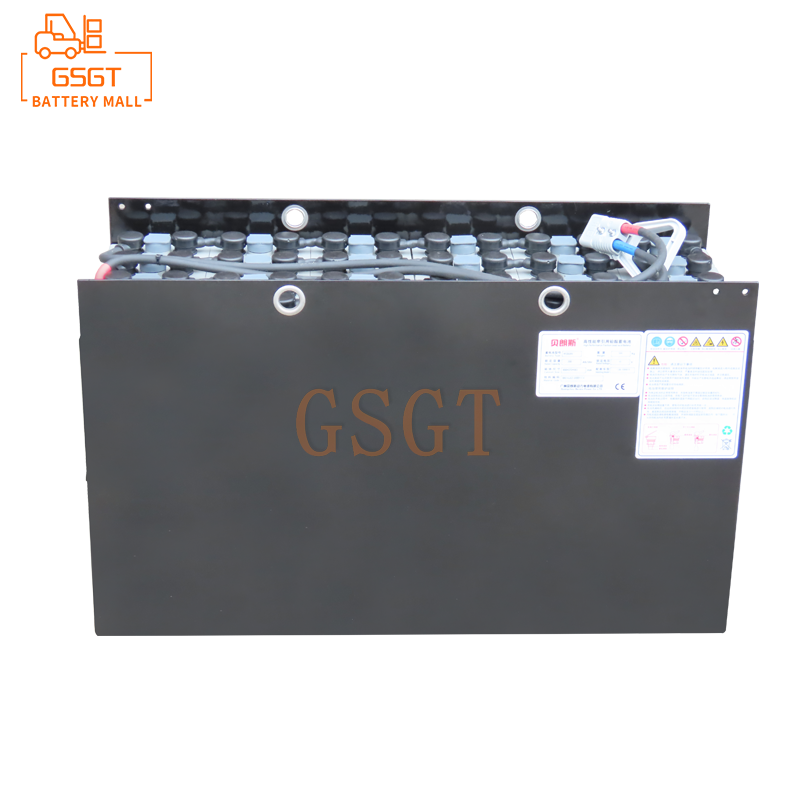Time:2025-06-09 10:04:33
Browse:611
In fields such as logistics and warehousing, factory handling, etc., forklifts, as important material handling equipment, are widely used in various operation scenarios. As the core power source of electric forklifts, the performance and maintenance status of lead-acid batteries not only directly affect the working efficiency of forklifts, but also account for a considerable proportion in the total life cycle cost of the equipment. How to achieve cost reduction and efficiency improvement of forklift lead-acid batteries through scientific and reasonable maintenance measures has become the focus of attention for many enterprises.
1. Analysis of the Current Situation and Problems of Lead-Acid Battery Usage in ForkLifts
At present, most electric forklifts on the market are still using lead-acid batteries. Lead-acid batteries have occupied an important position in the industrial vehicle field due to their advantages such as mature technology, relatively low cost, and good high-current discharge performance. However, with the increase in usage frequency and the extension of service life, lead-acid batteries have gradually exposed many problems, which in turn lead to rising costs and declining efficiency.
From a cost perspective, although the purchase cost of lead-acid batteries is relatively low, the subsequent maintenance cost and replacement cost should not be underestimated. Frequent maintenance tasks such as charging, electrolyte replenishment, and plate sulfation repair not only consume a great deal of human and material resources but also may lead to premature battery damage due to improper maintenance, shortening the battery's service life and increasing the frequency and cost of replacing new batteries. At the same time, lead-acid batteries have certain energy loss during use, and the relatively low charging and discharging efficiency also indirectly increases the usage cost.
In terms of efficiency, the capacity of lead-acid batteries will gradually decline over time, resulting in a shortened driving range and a decrease in power performance of forklifts. This makes the forklift need to be charged more frequently during operation, reducing the effective working time of the equipment. In addition, if the battery malfunctions, such as sulfation of the plates or short circuits, it will also cause the forklift to stop for maintenance, further affecting the production progress and work efficiency.
2. Key Factors Affecting the Cost and Efficiency of Lead-Acid Batteries in Forklifts
(1) Charging Management
Unreasonable charging methods are one of the important factors affecting the lifespan and performance of lead-acid batteries. Overcharging will cause the battery to heat up, accelerate the aging of the plates and the consumption of the electrolyte. Insufficient charging, however, will lead to sulfation of the plates and reduce the battery capacity. Meanwhile, the performance and adaptability of the charging equipment will also have an impact on the charging effect. Using an mismatched charger may not achieve the best charging effect and may even damage the battery.
(2) Electrolyte Management
Electrolyte is an important medium for chemical reactions in lead-acid batteries, and its density and liquid level directly affect the performance of the battery. Both excessively high and low electrolyte density will affect the charging and discharging efficiency of the battery. However, if the liquid level is too low and the plates are exposed to the air, oxidation and sulfidation are likely to occur. In addition, the purity of the electrolyte is also of vital importance. The presence of impurities will accelerate the chemical reactions inside the battery and shorten its lifespan.
(3) Daily usage and maintenance habits
The operating habits of forklift drivers have a direct impact on the lifespan and performance of lead-acid batteries. Frequent sudden acceleration and braking can cause the battery to discharge a large current instantaneously, accelerating the wear of the plates. Working for a long time in harsh environments such as high temperatures and humidity can also have adverse effects on batteries. At the same time, the lack of regular battery inspection and maintenance, which makes it impossible to detect battery problems in a timely manner, will also lead to the gradual deterioration of the problems.
(4) Battery storage and idle management
When forklifts are idle, improper storage of lead-acid batteries can also affect their performance. Long-term storage in a state of low electricity will cause severe sulfation of the plates. However, if the storage environment temperature is too high or too low, it will also accelerate the chemical reactions inside the battery, resulting in a decrease in battery capacity.
3. Maintenance Strategies for Reducing Costs and Increasing Efficiency of Lead-Acid Batteries in Forklifts
(1) Optimize charging management
Adopt scientific charging methods: Follow the principle of "shallow charging and shallow discharging" to avoid excessive discharging and overcharging of the battery. When the battery power remains at 20% - 30%, it should be charged in time. The charging time should not be too long, generally controlled within 8 to 10 hours. Once fully charged, stop charging promptly. At the same time, a phased charging approach can be adopted. First, perform constant current charging. Once the battery voltage reaches a certain value, switch to constant voltage charging to enhance charging efficiency and battery life.
Select the appropriate charging equipment: According to the specifications and parameters of the battery, choose the matching charger. High-quality chargers are equipped with intelligent charging functions, which can automatically detect the battery status, adjust the charging current and voltage, and avoid problems such as overcharging and undercharging. In addition, regular maintenance and inspection of the charging equipment should be carried out to ensure its stable performance.
Establish a charging management system: Formulate strict charging operation procedures, clearly defining requirements such as charging time and charging environment. Assign a dedicated person to be responsible for charging management, record the charging status of the battery, and promptly identify and solve any problems that arise during the charging process. At the same time, plan the charging time reasonably and charge during the off-peak electricity price period to reduce the electricity cost.
(2) Strengthen the management of electrolyte
Regularly test the density and liquid level of the electrolyte: Test the battery electrolyte at least once a week. Use a hydrometer to measure the density of the electrolyte and ensure it is within the specified range. Meanwhile, check the electrolyte level, which should be maintained 10 to 15mm above the plates. If the liquid level is too low, distilled water or special lead-acid battery replenishment solution should be added. Do not use tap water to prevent impurities in the water from damaging the battery.
Adjust the density of the electrolyte in a timely manner: According to different usage environments and seasons, adjust the density of the electrolyte appropriately. In winter, the density of the electrolyte can be appropriately increased to enhance the low-temperature performance of the battery. In summer, the density of the electrolyte can be appropriately reduced to prevent the battery from overheating. When adjusting the density of the electrolyte, concentrated sulfuric acid or distilled water should be added slowly while stirring continuously to ensure uniform density.
Maintain the purity of the electrolyte: Regularly clean the sediment inside the battery to prevent excessive accumulation of sediment from causing short circuits in the plates. At the same time, to prevent the electrolyte from being contaminated, when adding electrolyte or replenishing liquid, use clean tools to prevent impurities from entering the battery interior.
(3) Properly manage the storage and idle use of batteries
Fully charged storage: When a forklift is idle for a long time, the battery should be fully charged first, and then the connection between the battery and the forklift should be disconnected to prevent self-discharge of the battery. Charge the battery once every two weeks to prevent sulfation of the plates due to excessive self-discharge.
Control the storage environment: Store the battery in a dry, well-ventilated and cool place, with the storage temperature controlled between 5℃ and 25℃. Avoid the battery being affected by direct sunlight, high-temperature baking or humid environments. Meanwhile, place the battery on a dedicated storage rack to prevent it from being squeezed or collided.
4. Conclusion
The maintenance of lead-acid batteries in forklifts is of great significance for achieving cost reduction and efficiency improvement. Through a series of scientific and reasonable maintenance strategies such as optimizing charging management, strengthening electrolyte management, standardizing daily usage and maintenance habits, and doing a good job in battery storage and idle management, the service life of batteries can be effectively prolonged, maintenance and replacement costs can be reduced, and the working efficiency of forklifts can be improved. Enterprises should fully recognize the significance of battery maintenance, formulate practical and feasible maintenance plans based on their own actual situations, and strictly implement them, so as to achieve efficient utilization of lead-acid batteries in forklifts and sustainable development of the enterprises. In the future, with the continuous advancement of technology, the maintenance methods of lead-acid batteries will also be constantly optimized and innovated, bringing more economic and social benefits to enterprises.

$5010

$5710

$2530

$2040

MESSAGE
Professional And Efficient
Security
Affordable Price
Professional Services